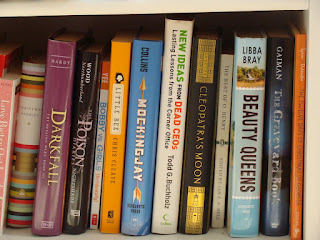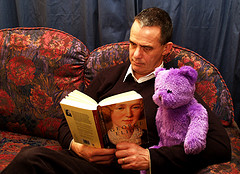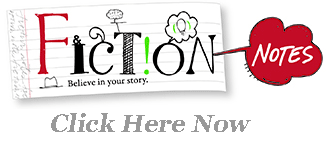new posts in all blogs
Viewing: Blog Posts Tagged with: Market research, Most Recent at Top [Help]
Results 1 - 9 of 9
How to use this Page
You are viewing the most recent posts tagged with the words: Market research in the JacketFlap blog reader. What is a tag? Think of a tag as a keyword or category label. Tags can both help you find posts on JacketFlap.com as well as provide an easy way for you to "remember" and classify posts for later recall. Try adding a tag yourself by clicking "Add a tag" below a post's header. Scroll down through the list of Recent Posts in the left column and click on a post title that sounds interesting. You can view all posts from a specific blog by clicking the Blog name in the right column, or you can click a 'More Posts from this Blog' link in any individual post.

By: Clare Hanson,
on 4/13/2015
Blog:
OUPblog
(
Login to Add to MyJacketFlap)
JacketFlap tags:
Books,
market research,
consumer marketing,
*Featured,
Business & Economics,
marketing strategies,
Product Marketing,
Creating Value: The Theory and Practice of Marketing Semiotics Research,
Laura Oswald,
marketing semiotics,
semiotic paradigm,
semiotics,
Add a tag
The semiotic paradigm in market research gives new meaning to the expression, "You are what you eat." The semiotic value of goods, from foodstuffs to cars, transcends their functional attributes, such as nutrition or transportation, and delivers intangible benefits to consumers in the form of brand symbols, icons, and stories. For instance, Coke offers happiness, Apple delivers "cool," and BMW strokes your ego.
The post Signs, strategies, and brand value appeared first on OUPblog.
I'll admit, when I first starting to write picture books I didn't approach it from the same angle as I did when writing my nonfiction books. That is to say, I didn't see my stories as a product that had to fit in a competitive market. However, when I finally experienced that light bulb moment I quickly placed my first picture book,
A Book For Bramble.
What changed?
I started to research the market. I visited the local library and spent hours looking at picture books. As I read, I took notes. I noted the names used, how sentences were constructed, what themes were covered, how humor was included, word count, etc. I then visited the local bookstore and repeated the exercise (slightly more discreetly) to discover if there were differences between what was being published and what had been published (the books in the library). Armed with these notes, I returned home and tried to discover if I could see patterns in subject matter, in the way subjects were covered, and in the way sentences were constructed.
I discovered:
- Humor appears to play an important part in many books.
- Tools such as repetition are used to help move the story along.
- The magic number three appears in many books (for example in The Gruffalo, you'll discover "'three" hidden all over the place).
I started to use the patterns I'd found in my own stories. Within months of changing the way I looked at my stories, I fulfilled one of my lifetime ambitions of becoming a published picture book author.
Today I still continue to research the market and read picture books as often as I can. The receptionists at my dentist, doctor, optician and vets are used to seeing me rummage in the stock of picture books they provide to keep kids entertained. The assistants in the library and bookstore now take no notice as I read their picture books. Family and friends watch in amusement as I encourage their children to show me the latest addition to their bookshelf. Without this research I'd not be able to keep up to date with a changing market. By keeping abreast of what the reading public wants, I'm able to write stories I can place with a publisher.
So if a new writer (of any genre) wants to become published, my advice is research, research, research.
***
Lynne Garner has been a freelance writer and author since 1998. Since that time she has written for a large number of magazines both in the UK and the US, having over 300 features printed. She has 21 books published; these include 10 craft-related how-to books, working with both publishers and packagers. Lynne designed, produced copy, and photographed many of the craft projects featured on The Craft Ark
.*****
Join Lynne's latest WOW! Women on Writing class:
0 Comments on Researching the Picture Book Market as of 1/1/1900

By: Phil Sexton,
on 4/5/2012
Blog:
Guide to Literary Agents
(
Login to Add to MyJacketFlap)
JacketFlap tags:
Building Readership,
Marketing & Self-Promotion,
There Are No Rules Blog by the Editors of Writer's Digest,
New Tools for Entrepreneurial Writers,
Digitization & New Technology,
marketing,
General,
Self-Publishing,
Amazon,
readership,
content,
market research,
Add a tag
By Rob Eagar, author of Sell Your Book Like Wildfire
Did you know that Amazon lets authors see who is highlighting notes in their books and tweeting content to friends? When someone reads a book using a Kindle device or app, Amazon stores the information they highlight. Plus, Amazon displays who used Twitter to spread word of mouth to their friends. How does it work?
1. Go to: https://kindle.amazon.com
2. Type in the title of your book in the “Search” box at the top right-hand corner.
3. Click on your title when it appears in the search listing.
4. You will see a picture of your book cover, a list that says “Posts from this book,” and a section called “Highlights,” which shows content that people notated while reading your book on their Kindle.
It may seem a little creepy that Amazon tracks all of this reader information. But, keep in mind that Amazon only displays information that readers agree to make public. There’s no blatant invasion of privacy. Kindle readers can turn off this sharing feature if they desire.
Amazon’s slogan for their Kindle service is “Read. Review. Remember.” I like that tagline, and I think their new service offers some innovative promotional opportunities for authors. Here’s why:
1. Authors get an unprecedented opportunity to peek into the minds of their readers. You can see what parts of a book resonate with readers the most, because you can literally see the passages that people highlighted. This ability allows the author to focus future blog posts, free resources, interview topics, or social media conversations on content that they know people already find intriguing.
2. Authors can identify and thank readers who share word of mouth via Twitter. By seeing who tweets your material, you can leave a message at that individual’s Twitter account to show your appreciation for telling their friends. How cool is that?
3. If your book doesn’t have many highlighted portions or shared posts, it could indicate that your book isn’t being discovered or the content isn’t capturing reader interest. Knowing that information can serve as a wake-up call to improve your marketing or strengthen the manuscript for your next book.
Even though this service from Amazon is unique, I would urge you to take it with a grain of salt. Don’t base your book’s marketing plan or primary promotional activities on the comments you see posted or the passages highlighted. Those comments listed only represent a small fraction of your total reader base. Instead, stay focused on marketing your book based on its overall value. Use the benefit of this service to gauge what kind of conversation is happening around your books.
I’m excited to see Amazon offer another ground-breaking service that brings readers and authors closer together. At times, they seem like one of the few organizations dedicated to helping authors break the down the walls of publishing.
About the Author
Rob Eagar is the founder of WildFire Marketing, a consulting practice that helps authors and publishers sell more books and spread their message like wildfire. He has assisted numerous New York Times bestselling authors and his new book, Sell Your Book Like Wildfire, will be published by Writer’s Digest in June, 2012. Find out more about Rob’s advice, products, and coaching services for authors at: www.startawildfire.com

It’s a fact that I’ve learned a whole lot more from my writing mistakes than from my writing successes. Take, for example, the chapter book debacle.
The first manuscript I wrote was an 8,000-ish word chapter book called, "Eddie’s Chance to Dance." Except that I didn’t really know it was a chapter book. I just thought it was a charming tale that might be a tad short for juvenile fiction.
Then somebody told me it was a chapter book. Well, okay, no need to be all smartypants about it. It wasn’t like I hadn’t
heard of chapter books. I’d bought a ton of them for my kiddies. I just hadn’t…what’s the word again? Oh, yeah.
Read many of them. So I thought I’d better brush up on chapter books.
I checked out shelves full of these slim books from my local library and read every single one. And what I realized,
after all that brushing up, was that my chapter book was not very good. Or to put it another way, Eddie didn’t stand a tap shoe's chance of getting published.
I’d made a big mistake. I dashed off a chapter book before I knew much about what makes a good chapter book. It seems like an obvious concept, to research
before you write, but you’d be surprised how often writers (and I’m including myself here) will write something willy-nilly and expect the world (and I’m including mostly editors here) to love it.
I figured out a few things after all that reading, and not just about chapter books. For example, if I want to write for a market, say a webzine like WOW!Women-on-Writing, I’ll read a ton of issues
before making a pitch. If I have a mystery novel in mind, I’ll read a couple
Edgar Award winners before pounding out 50,000 words. And now that I write fiction for the kiddies, I’ve read picture books on the
Caldecott Medal list, and chapter books and middle grade on the
Newbery Medal list, and young adult novels on the
Printz Award list. These days, I do my reading research.
Lesson learned.

• This story in the Baltimore Sun on digital comics, Diamond and comics retailers
doesn’t tell those of you who have been paying attention much you didn’t already know, but it sums things up and provides a nice picture of Diamond owner
Steve Geppi.• Kelly Thompson wraps up part 4 of her Ladies Comics Project II
in which women who have varying degrees of comics exposure read graphic novels. Once again, some very valuable market research:
So what did I learn of this latest Ladies Comics Project iteration? Well, for starters I learned that graphic novels are definitely more accessible than single issues for non-comics readers…which is really no surprise, but it’s nice to have confirmation. Most of the women seemed to appreciate longer more contained stories, as well as books that felt easy to jump onto the way any prose novel would, rather than the complexities of ongoing continuity.
There also, as I mentioned in my opening paragraph to part one, continues to be a real confusion between genre and medium and a general equation that comics equal superheroes. I don’t know how we fix this problem other than getting more and more truly good books – both superhero and otherwise – into the hands of non-comics readers. Great stuff (Scott Pilgrim?) spreads like wildfire…so the more great stuff we produce and promote, the more people are going to find it and love it and talk about it themselves.
•
Lori Weisberg and Roger Showley at the San Diego Union Tribune look at
how the proposed convention center expansion would affect overall convention business. If you thought that expanding would just help out Comic-Con, even groups like the map muddlers and kidney lookers are getting squeezed out:
As much as San Diego would like to cement its position as a prime destination for the nation’s larger, more well-heeled medical meeting groups, it is just as important to attract multiple smaller groups who could occupy the center concurrently, said consultant Steven Spickard. Enlarging the center by an additional 400,000 square feet of meeting, exhibit and ballroom space, would effectively add 365 more dates available to smaller groups, he said.
During the last year, 10 conventions accounting for 40,000 potential delegates, were unable to book at the center either because of insufficient space or lack of available dates, according to monthly reports published by the Convention Center Corp. Spickard concluded in an analysis released last year that an expanded center could draw on average nearly 250,000 additional convention and trade show attendees a year by 2017, which translates into $348.8 million in spending on lodging, meals and other expenses.
Earlier this week I said that I was working feverishly on various projects to get them done before submissions started. One of those projects is the cover for the fourth in the Sacred Books Series, The Book of All Things.
I have developed various covers, one of which is my favorite, and one which is the author's. They are not the same.
So, I could now use a little help from all of you. Below you will find the top three cover options (so far). Look at the covers, click them to see them full size, and then ask yourself, "Which book is the one I would want to buy?"
After that, please vote in my cover poll below. The more input I get, the more statistically significant the outcome. So vote! Show your friends and family and have them vote!
Thanks!

Basic Black | 
Rainbow Connection |  Heavy Metal Heavy Metal |
<a href="http://polldaddy.com/s/099C6E1E76DC3AE4">View Survey</a>
Take a Reading Day
Standard advice: read what you want to write.
If you want to write a novel, then read mysteries or thrillers or teen or easy readers or whatever genre you want to write.
Last week, I took a reading day and had great fun. I often advise people to read 100 picture books (published within the last 5 years) in preparation for writing picture books. One way I accomplish this is to visit my local bookstore and read new books from their Picture Book Wall. However, this only gets the books that this large chain bookstore chooses to put on said wall. So, last week, I had a library day. I only read ten books, but it was interesting.
Picture Book Illustrations:
I liked 8 out of the ten illustrations. The two I disliked were watercolor that had turned muddy. They had nice details, good characterization, but the muddy watercolors made it a dark, uninviting book.
Picture Book Texts I Didn’t Like
I didn’t like four of the texts. A couple of these were from author/illustrators and the illustrations carried the book; of these, the poetry had ineffective rhyme just there to rhyme and the meaning was lost; another had text that would have been rejected if from an author as “too slight.” (It’s that maddening double-standard applied to texts from picture book authors and picture book author/illustrators.)
One text had a typo on the second page – it was a popular author, good company, someone just slipped up. Another had text WAY too long, lots of purple prose and lapses in the storyline. One nonfiction surprised me because the author’s note explained that she had created some of the dialogue; from another publisher, I might not have noticed, but I was shocked to see this from this author/publisher.
Picture Book Texts I Liked
Simple, yet effective was one of my notes on a text. Some texts were generally good, but some of the double-page spreads were less effective because of long-winded text on a particular page. The best texts were funny, age appropriate, simple-yet-effective.
These were just books that were in my library that day, set upright to entice readers. No attempt to be random or scientific, just “found” books. Here’s a different breakdown.
- 1 rhymed text
- 3 historical fiction
- 2 broken or twisted fairy tale
- 3 celebrations of art from author/illustrator
- 1 contemporary/multicultural set in Asia
Lessons from a Reading Day
What did I learn? I was reminded what I love and what I dislike about picture books. I still like short, but effective texts. I like bright, clear illustrations. I still like reading and writing picture book texts.
Plan for the week: Write a new picture book.
If you go to the library or bookstore for a reading day, give us a report!
We just posted brand new research for sale from our friends at SurveyU — it's their monthly "Now Report," which looks into the lives of college students. This month's "Now Report" is all about spring. From Spring Break plans to summer jobs,... Read the rest of this post
IOBA just released the results of a survey on how independent booksellers are faring during the recession.
Based on sales data from 48 participating bookstores, IOBA President Chris Volk reports:
- the average sales drop from 2008 to 2009 was 10.6%
- for sellers with an average sales price between $10-$40, the average sales drop was 7.1%
- for sellers with an average sales price between $40-$100, the median sales drop was 18.7%
See more details...
[Now reading: The Solitude of Emperors by David Davidar]












Hey, that Cathy C. lady is all over the blog world! I never excepted to see her name at the end of this article. Obviously, I hadn't noticed her name up there in the Contributors list, either. Some scathingly brilliant advice, Ms. Cathy C! :D
Sound advice!
Great post about research, and I totally agree that mistakes drive the point home like nothin' else—DON'T DO THIS AGAIN!
Thanks, y'all! And Lisa, I often share my writing What Not To Do's. And how I learned what NOT to do? Yep, you guessed it. (I've made quite a few writing mistakes! ;-)
"Eddie didn’t stand a tap shoe's chance of getting published." Oh, do I know that feeling! :)
Thanks for the article, Cathy!
The great thing about this lesson is that it's not like we find out we have to take nasty medicine or blister our hands digging ditches. All we have to do is read. It's like getting dessert before dinner.
I'm a teacher. But I learn something every day. Unfortunately, it's usually along the lines of Friday's student-driven lesson: "Did you know that Cher is a WOMAN?"
You've taught me something useful. I've heard of Caldecott and Newbery award-winners. Now I know about Edgar and Printz.
This is what makes writing the greatest job in the world. Our research is a immersing ourselves in great stories. It's almost a good excuse to make mistakes. Almost. Great post and advice, Cathy!
At least you researched before you sent the manuscript! Sometimes, I shudder at my beginner mistakes. We all have them. :)
Great post! Thanks a lot.
It's really grest post! Thanks.